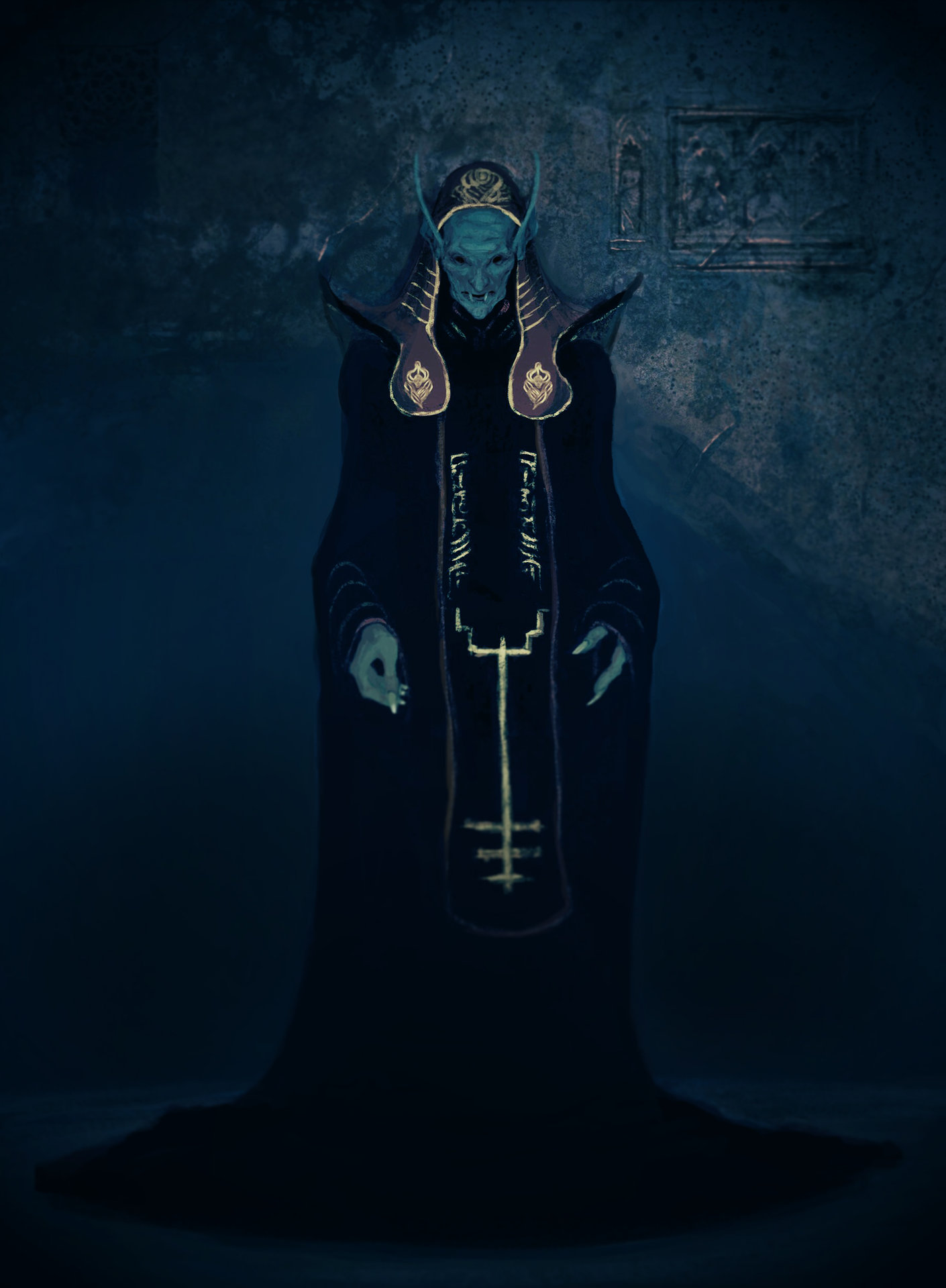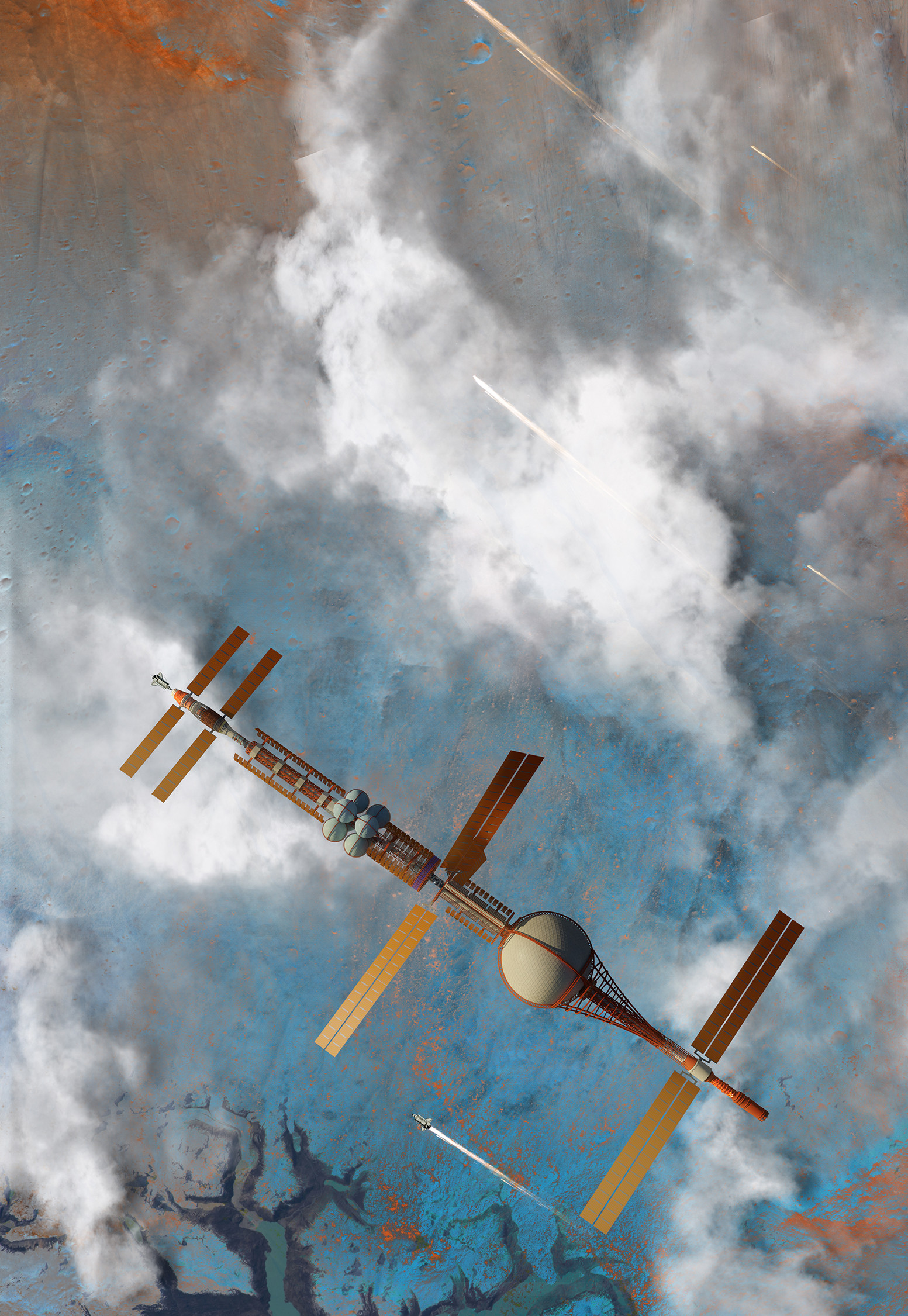Continued from here.
With angels, devils and daemons generally outlined there are now the following supernatural creatures to consider for my Elizabethan England setting:
- Mythical beings.
- The undead.
- Folklore creatures.
Demihumans.
 |
| Max Kostenko |
Mythical beings
The division between myth and folklore is a bit of an arbitrary distinction, myths forming a sort of 'social foundation' to a country/culture compared to a more day-to-day folklore aspect. I've taken the below as literally 'larger than life' folkloric entities:
Dragons
- Polymorph: Dragons can assume many forms, from animal to humanoid. Their stats and powers do not change depending on their assumed form.
- True Form: Considerate dragons will assume 'a form you are comfortable with' when communicating with mortals. Their true forms are more akin to balls of nuclear fire surrounded by endless fractal shapes that defy comprehension - upon being viewed by a mortal they tend to coalesce into a shimmering, snake-like form of changing size and dimension. Anyone viewing a dragon's true form must Save vs Magic or be driven insane for (1d4):
- A day.
- A week.
- A month.
- Permanently.
- Physical Mastery: Dragons do not use magic but their understanding of the physical world is unparalleled. They are capable of interfering with a number of physical forces, including gravity. As such they are not affected by terrain modifiers and can fly at will. They can touch a target to cause 2d10 damage through interference with fundamental forces. They are immune to most physical attacks (a thermonuclear warhead might cause some discomfort) but are vulnerable to magic, which bypasses physical laws.
- Nuclear Furnace: A dragon's core is essentially a naked singularity surrounded by an accretion disk of white-hot matter. A dragon can harness the radiation emitted by this proto-fusion as a breath weapon against a target within 100ft - suffer 4d8 damage and burst into flames on a successful hit, Save vs Poison for half (survival will likely lead to some form of fatal cancer within the next couple of years).
These ain't your usual big lizards. Whereas angels are protected by the touch of God Himself dragons are essentially sentient relics of the early universe. It's debatable whether a survivor rationalised the appearance of a dragon as a winged reptile or stories of such beings existed and were mapped on to the appearance of a true dragon, but this is the reality behind the myth. (Un)luckily for my players, a pair of dragons features prominently in national myth, so they might run into one somehow. No one knows their plans.
Giants
- Huge: Giants are, without exception, larger than mortal humans. How large varies on the giant, but they're big - GMs can confer advantages and disadvantages as they see fit. They are able to contort and squeeze their bodies through the smallest spaces.
- Blood of Heaven: While they lack the protection afforded by even the lowest devil's Tarnished Adamant the heavenly blood flowing through a giant's veins confers a natural AC of 18/plate equivalent.
- Voice of Command: Giants are above mankind in stature and authority by virtue of the divine blood in their veins. Any human who hears a spoken command from a giant must Save vs Magic or obey. A successful Save will allow them to ignore all further commands for the rest of the day.
- Builders of Babel: Giants can understand, read, write and speak all human languages.
I wanted something more grounded in Biblical myth for giants - they have watered-down angelic powers for the most part but are also ranked firmly above humanity by virtue of their angelic blood. Where Gog and Magog may lie is a mystery, but rumours abound of the treasure hoarded by giants. Rumours also abound of grinding human bones to make bread, but what's a little risk?
 |
| Andrea De Dominicis |
The undead
This is quite a broad category so I'll break it down into the following subsections:
Vampires
And Cain said to Abel his brother, "Let us go out to the field," and when they were in the field Cain rose against Abel his brother and killed him. And the Lord said to Cain, "Where is Abel your brother? And he said, "I do not know: am I my brother's keeper?" And He said, "What have you done? Listen! your brother's blood cries out to me from the soil. And so, cursed shall you be by the soil that gaped with its mouth to take your brother's blood from your hand. If you till the soil, it will no longer give you strength. A restless wanderer shall you be on the earth." And Cain said to the Lord, "My punishment is too great to bear. Now that You have driven me this day from the soil I must hide from Your presence, I shall be a restless wanderer on the earth and whoever finds me will kill me." And the Lord said to him, "Therefore whoever kills Cain shall suffer sevenfold vengeance." And the Lord set a mark upon Cain so that whoever found him would not slay him.
This bit is shamelessly stolen from old Vampire: The Masquerade lore - God punishes Cain by branding him with a mark and cursing him to wander the Earth in endless hunger, and some additional unpleasantness. Cain's descendants carry the essence of this curse, becoming the first vampires. All vampires have the following traits in common:
- Blood Drinkers: All vampires must sustain themselves on the blood of sentient beings - their teeth function as a natural weapon dealing 1d4 damage but they can only feed from a suitably restrained victim. Some are able to feed with restraint but others tear their victims apart in an animalistic frenzy - when drinking blood from a living victim a vampire must Save vs Magic or begin to savage them.
- Shadow Dwellers: Vampires cannot venture out in daylight - every round with their skin exposed to the sun deals 1d10 damage, no save.
- Profane: Vampires are vulnerable to holy water and can be Turned by the correct ritual/spell.
- Marked: Though the cursed mark of their forefather is diluted, vampires still possess a natural AC of 16/chainmail.
- Cursed Earth: Even as the Earth rejects them a vampire is intimately bound to it. They may not pass over running water (a river, stream or canal would count, but not a bucket of water tipped down a slope) while conscious. Upon sunrise they must rest on a bed of grave soil in a torpor until the night dawns once more. Failure to do so inflicts the same fatigue penalties as a PC whose rest was interrupted.
- Endurance: A vampire reduced to 0hp is not killed unless their body is staked, beheaded and burnt, or otherwise ritually purified (a priest performing an exorcism on the body, for example). If this is not done the vampire will begin to regenerate the next night, recovering within a week to walk the night once more.
- Embrace: A character drained of blood and killed by a vampire must Save vs Magic - on a failure they become a vampire themselves and rise at the next new moon unless their body was destroyed or given a proper burial with the correct rites.
They're vampires, what more can I say?
Incorporeal undead
Ghosts, haunts, poltergeists etc. They're traps a la Goblin Punch - this is too good to not use.
Corporeal undead
Zombies, skeletons, revenants, wights and other spooky things given animus from beyond the grave. These corporeal undead share the following common traits:
- Profane: Corporeal undead are vulnerable to holy water and can be Turned by the correct ritual/spell.
- Mindless: Absent direction from the magician or entity that raised them corporeal undead rely on specific instructions carved/engraved upon their flesh and bones - poorly phrased instructions can lead to unintended consequences. Spells that affect mental states will not work on corporeal undead.
Folklore creatures
Based on creatures commonly found in British folklore. - Born of Flame: Black hounds cannot be harmed by heat or fire, save for Heavenly fire.
- Boundless Step: Once a black hound has identified a target it can teleport to within 100m of the target as a Move action. This can be performed once a day.
- Death's Gaze: Upon spotting a black hound a character must Save vs Magic or be paralysed with fear at visions of their death and enslavement in Hell for 1d8 rounds. A successful save will protect the target from this effect for a day.
- Cold Iron: Coming into contact with iron and its alloys burns faeries, causing 1d4 damage/round while in contact with the offending item/object.
- Animal Form: faeries are capable of assuming the form of a woodland creature as a Movement action.
- Wards: A faerie can be warded off with a charm made of rowan wood. If the faerie attempts to attack or interfere with a warded target they must Save vs Magic - on a failure they must flee in the opposite direction at full speed.
- Out of Sight: A faerie can turn invisible as a Movement action. This can be used once per day - attacking a target or otherwise attempting to directly interfere with them dispels the effect, but pranks in their vicinity will not.
- Full Moon: if touched by a moonbeam during the night of a full moon the lycanthrope transforms into its animal type (i.e. a wolf for a werewolf, a tiger for a weretiger etc.).This animal is significantly larger and more bestial than a normal wild animal and usually lacks a tail - its eyes are human and the lycanthrope is able to speak in human tongues. Upon transforming the lycanthrope must Save vs Magic or hunt for human flesh, losing control of themselves for the night. If they retain control but draw blood from another creature they must Save again. While in beast form the lycanthrope gains an additional 2HD-worth of HP, their attack bonus remains the same. These HP are deducted when the lycanthrope returns to humanoid form, potentially killing them. Upon sunrise the lycanthrope returns to human form and is fatigued for a full day.
- Silver Vulnerability: A lycanthrope is immune to physical harm save from silver, and wolfsbane-coated weapons.
- Cursed Bite: If a lycanthrope bites a humanoid victim who then survives the encounter, the victim must Save vs Magic when next out under a full moon. Failure indicates that the curse has passed on to them and they transform.
Demihumans
This could probably do with a post of its own, given that it'll involve PCs.

No comments:
Post a Comment